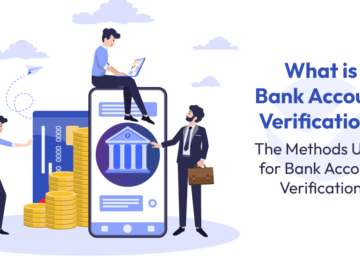One of the major drawbacks of technological advancement has been identity theft. As per a survey conducted by Experian in July 2020, 30% of consumers reported that they have been victims of online identity theft and financial fraud.
Taking proper measures while entering the online world is essential, the users should be aware of the tactics used by criminals and fraudsters to attain access to personal information.
The blog given below discusses broadly how identity theft works in the banking world and what adequate measures can be adopted to detect it. With proper understanding of the method used by criminals and opting for necessary precautions, can keep you safe in the online world and protect you from falling prey to identity theft.
What is identity theft?
First things first, identity theft is accessing someone’s personal information without their permission in order to commit fraud.
Phishing, smishing, and vishing are the ways used by fraudsters for identity theft.
Phishing
Spammers create fake websites, images or texts that appear to be genuine in order to obtain information from individuals. The personal information shared is used by scammers for meeting their intentions.
In a recent incident from Rajasthan, a farmer lost almost more than 8 lacs to cyber fraud because his son clicked on a phishing link. There has been a significant rise in cyber fraud cases in the past few years. As per the reports of EY, 53% of Indians state that cybercrime and ransomware risk has increased in India in the last 1 year.
Vishing
In this method, the entire act is done through a voice call and hence it is term as vishing (voice phishing). The fraudsters try to obtain personal information like credit card expiry date, CVV, Paytm Bank pin etc via a phone call. The miscreant portrays themselves to be an employee from some authentic organisation such as a government bank or Paytm employee and then asks you for your KYC details.
People are carried away by the reasons stated by the scammers like free cashback, reactivation of accounts, reward points etc.
Smishing
When an SMS, email, or WhatsApp message is used to attract and trap people, it is termed smishing (SMS phishing)
People are lured to call back on a fraudulent number, download malicious content via phone or visit fake websites.
The scammers use SMS, Facebook request, and WhatsApp messages to convey a text that indicates you have won some prize money, cashback offer or any similar attractive text and then they ask you to share your bank account details in order to attain the profit or the prize money. Once you have shared the same these people might do a fraudulent transaction using the account details they have received.
How does identity theft happen?
Identity theft is a common phenomenon in the arena of banking. Someone can steal your social security, account number and then use the same to open a new account in your name and rack up debt.
In some cases, the scammers access the bank account and make unauthorized withdrawals. This may happen when the bank account number is stolen or the online account is not secure.
It is very essential to detect whether the emails you receive are from genuine authority or not. As there have been cases where people have faced identity theft because they click on a phishing email that looks similar to the one they receive from their original bank.
This email intrigues you to click on a link or download an attachment which would result into your system getting installed with the malware. Once the malware gets into your system the cybercriminal can access all the information regarding your bank details from your computer or any gadget.
How can Banks Detect & Prevent Identity Theft?
With the increase in identity theft in the world of banking, adding new customers has become a risky game for banks. Hence, banks are required to satisfy regulations such as KYC (know your customer) and AML (anti-money laundering). These norms are set up by the government in order to prevent any kind of financial fraud hence the process of detecting stolen identity gets started at the onboarding stage itself.
The banks can use various APIs to make sure that they are onboarding the right customers with authentic identities. Zoop Stack offers a wide range of APIs to assist banks in making the onboarding process smooth and secure.
Contact us at sales@zoop.one
Identity theft is a growing concern in the arena of banking. Fraudsters have been using various approaches to manipulate users into sharing their confidential banking details. This has led to rise in the number of financial fraud cases.
The article below vividly describes the meaning of identity theft in banking and what measures can be taken to avoid the same.



